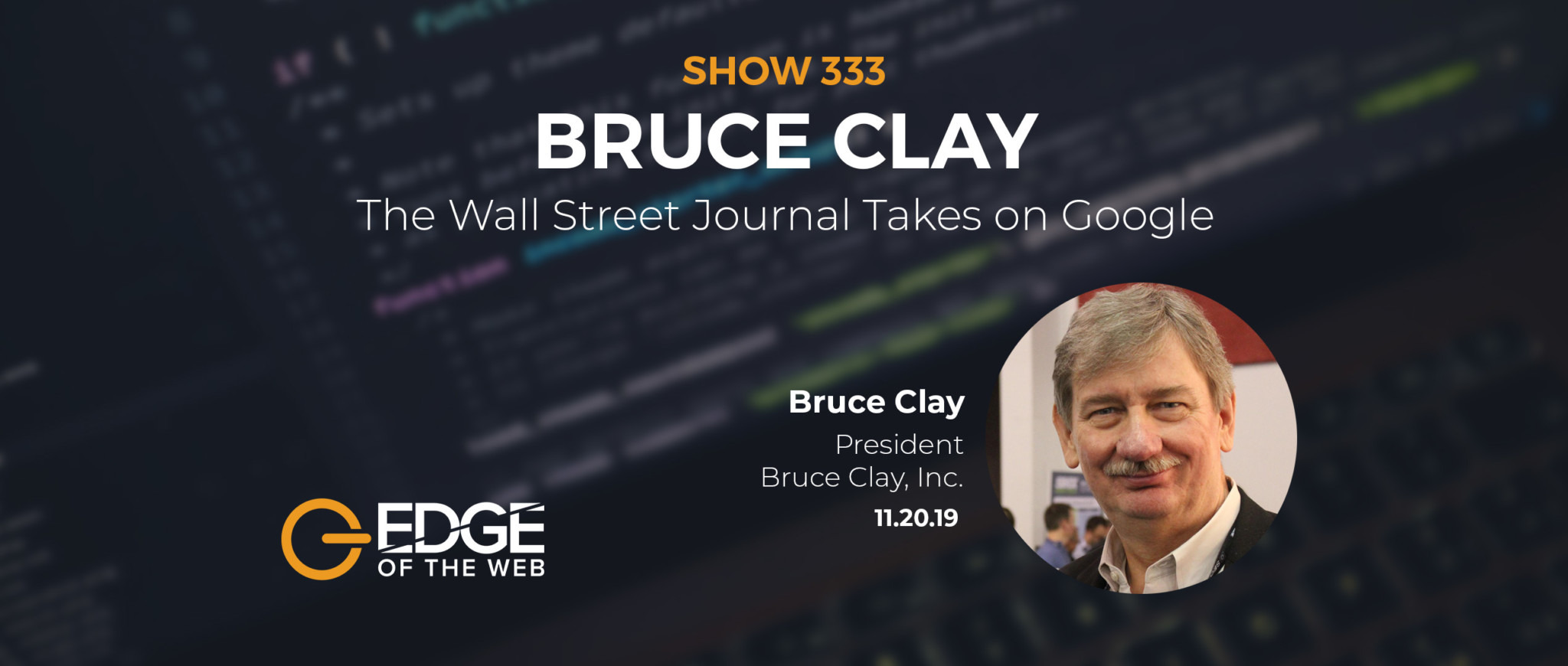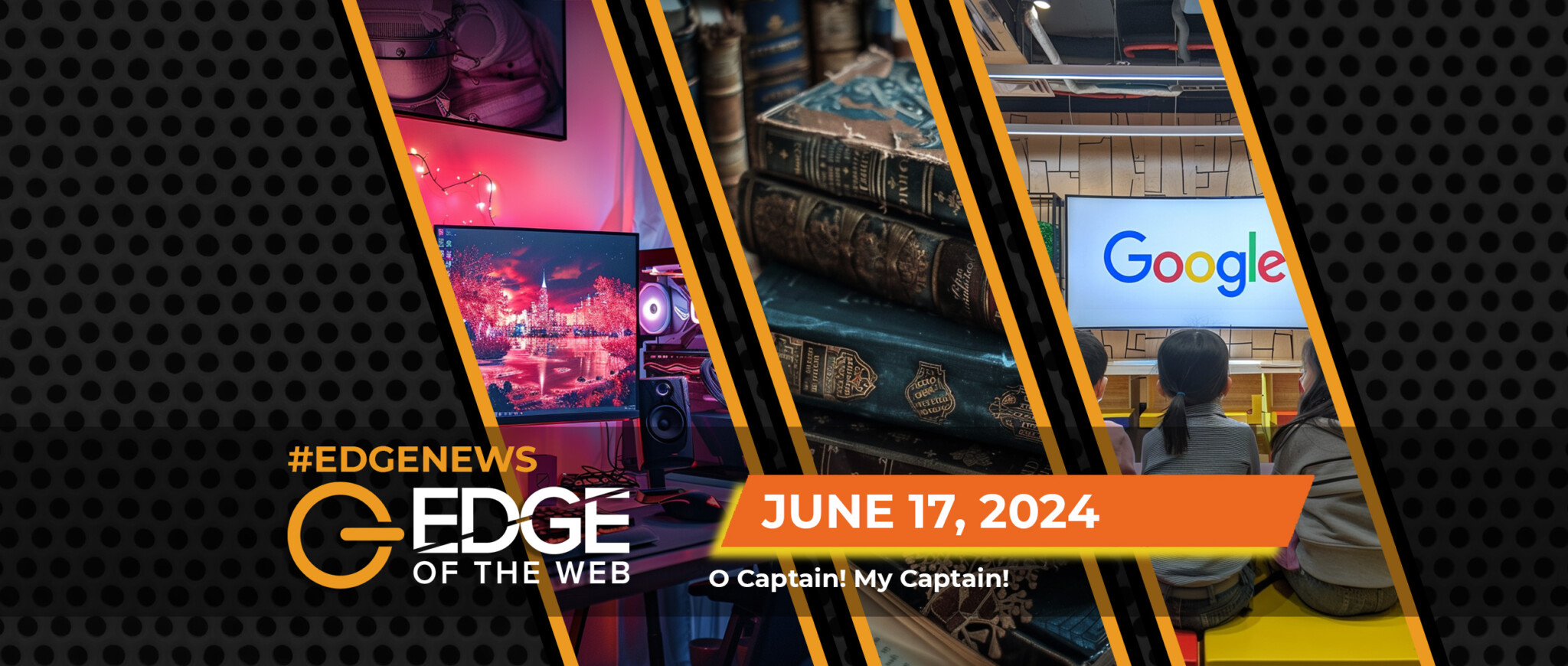The digital marketing news roundup segment that kicks off each episode of the EDGE is your ticket to staying informed with insightful analysis from experts. The latest features host Erin Sparks and Creative Studio Producer Jacob Mann along with special guest SEO expert Bruce Clay of Bruce Clay Inc. Here’s the news roundup from Episode 333 of the award-winning EDGE of the Web podcast:
Google Going Old School with Local SEO, But In A New Way

From Dave Davies on Search Engine Journal we learn that Google is Going Old School with Local SEO, But In A New Way. The system is intended to monitor user behavior and combine said behavior with their location within a store, send them information that may support their purchase decision and, failing that, provide access to remote assistance and, should that fall short as well, send a signal to the store that a user is in need of information and dispatch a sales associate to their location
- Erin Sparks: So this is about a Google patent called Automatic Delivery Of Customer Assistance At A Physical Location. This is quite the plan of attack on bridging the gap of digital consumer intent to physical consumer intent.
- Bruce Clay: But the thing you have to keep in mind is how many patents are filed but never implemented. And in this case, there is codependency on the shop owner actually paying attention and receiving a notification, identifying which shopper in that aisle or in the store might be the right one. If your store is big and busy, that seems problematic. If your store is small and there’s only one customer in the store, then it could work. This would not work well at Costco during the holiday season. This can only work as a store opt-in, which for Google would probably manifest as a pay-per-click scheme. Remember that Google is in the business of making money, as it should be. It’s a logical thing to want to do, but the implementation seems like it could be chaotic and not work well.
- Erin Sparks: Right. The shopper’s device has to be on and communicating or broadcasting a signal, then there are the tiers of notifications, and probably beacon technology as well, just get the alert out let alone find the person. There are a lot of pieces to this puzzle, any one of which could go wrong.
- Bruce Clay: But even then, part of this is to guide people towards supplemental type products. And that requires a whole lot of personalization. And that goes into privacy statements. And is that going to work? Is somebody allowed to know what your preferences are? This could run into all sorts of legal issues, but it also goes back to fact that most patents are never implemented. And a lot of customers might not be ready for this kind of proactive approach from in-store salespeople.
YouTube’s new kids’ content system has creators scrambling
According to Makena Kelly and Julia Alexander on The Verge, YouTube’s new kids’ content system has creators scrambling. On Tuesday afternoon, YouTube formally announced its plan to have creators label any videos of theirs that may appeal to children. Starting in January 2020, if creators mark a video as directed at kids, data collection will be blocked for all viewers, resulting in lower ad revenue, and those videos will lose some of the platform’s most popular features, including comments and end screens. It’s a major change in how YouTube works and has left some creators clueless as to whether they’re subject to the new rules. This is all part of YouTube’s settlement with the FTC for its violations of COPPA (Children’s Online Privacy Protection Act).
- Erin Sparks: COPPA forbids the collection of data on children under the age of 13 without explicit parental consent. In this case, it means YouTube cannot use its powerful ad targeting engine on kids under 13. Bit revenue hit for the lucrative children’s market.
- Bruce Clay: Well, I’m not positive the kids actually were a lot of revenue for people. Perhaps if they were making their Christmas list, but that doesn’t really need to know about their prior search history. I think privacy it has its place. And I think it’s a wonderful thing for people to respect the need to have children not be exploited. I just don’t think it’s going to impact a lot of the revenue, because even toy stores sell to parents. It’s worth remembering that for years nobody tracked anybody, and it still worked. That said, it could affect the revenue of content creators who find that the YouTube children’s content drives a lot of traffic to their website.
- Erin Sparks: Yes, like the current kind of YouTube, PewDiePie, which is a gaming channel with millions of viewers, a lot of whom are kids. It could be a huge revenue hit for him.
- Jacob Mann: But can’t he just say his video content is NOT for kids and be fine?
- Erin Sparks: But if YouTube looks at his channel and decides it is geared towards kids and he has mislabeled it, YouTube will make the final decision and there is no possibility of seeking an appeal, although content creators can provide feedback. And then YouTube is putting it back on the feds to put teeth into it. The FTC will go after channels that violate the policy and not go after YouTube itself.
- Bruce Clay: I think one of the questions that you’re going to run into is, how does YouTube make money? Because, you’re asking them to self-police whether or not there could be tracking and therefore advertising advantage on some of these videos. And they’re going to determine that themselves. That doesn’t necessarily mean that they’re always going to err on the side of this is for children.
Why many in the search community don’t believe the WSJ about Google search
On Search Engine Land, Barry Schwartz reports on Why many in the search community don’t believe the WSJ about Google search. “How Google Interferes With Its Search Algorithms and Changes Your Results. The internet giant uses blacklists, algorithm tweaks and an army of contractors to shape what you see.”
- Erin Sparks: This was a 23-page article on the Wall Street Journal laying out how Google manipulates search engine results shown to users. But Barry’s take on it is that it shows how little the reporters know about how search works. He did another article on Search Engine Roundtable where even said the WSJ should retract the whole article.
- Bruce Clay: We all understand Google’s in the business of making money. And the organic portion of their search results doesn’t really generate any kind of cash, any money. It just attracts people to their website, and then it’s the job of the website to capture money. That’s the easiest way to put it. Managing the organic side is strictly a task of developing a trustworthy set of results. Unfortunately, being in the software business as well, I understand the first time you release any kind of product it isn’t flawless. There’s a large industry out there that claims they help people by finding holes in the Google algorithm. The black hats of the world. If Google didn’t fight the black hats, then ultimately the first page of Google results would go to whoever can afford the most spam. And that is not what the world wants. We need trusted sources. And spammers are historically not trusted sources. A big part of the article didn’t understand there is a dynamic environment here. They’re assuming because Google has all this money and it’s the Google search engine, it must be perfect and you never have to tweak it, you never have to make an adjustment to it. Google can tackle it with software (which could take weeks or months) or they can just go in and suppress the bad behavior. They can take stuff out of their search engine results if they don’t trust it. It’s their search engine, after all. Using Google search is a privilege, not a right. And Google is allowed to do what it wants to ensure its results are trustworthy.
- Erin Sparks: And apparently we SEOs need to take some responsibility for making sure we help educate journalists (and politicians) about how all this works so they have a better understanding of it than what was put into this WSJ article.
Connect with Bruce Clay
Twitter: @BruceClayInc (https://twitter.com/BruceClayInc)
Facebook: @BruceClayInc (https://www.facebook.com/BruceClayInc)
LinkedIn: https://www.linkedin.com/in/bruce-clay-143449
Website: https://www.bruceclay.com
Blog: https://www.bruceclay.com/blog
Ready for Digital Marketing News? Get it from the EDGE Newsletter
You could be getting the latest digital marketing news delivered directly to your inbox! Go to EDGEofthewebradio.com and you’ll see the subscribe box at the very top of the page. It’s free-of-charge, and we will never use your email for anything except sending you the newsletter. You can also sign up by texting the word “EDGETalk” to 22828, but not if you’re driving, please! Enjoy these digital nuggets of gold from the EDGE – your source for digital marketing news.























